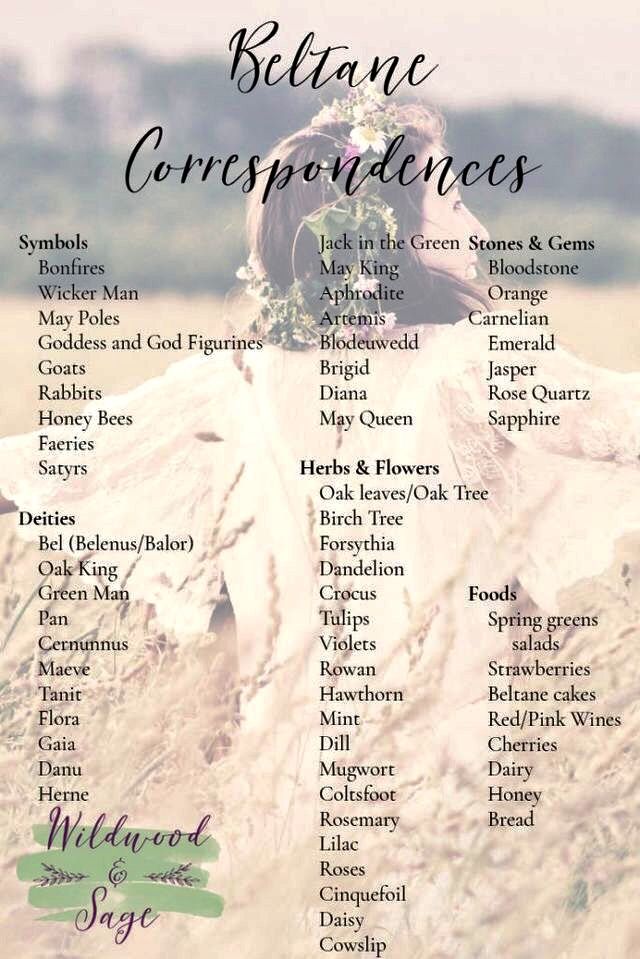
Category: The Sabbats
A Smile for Today

Who says chocolate bunnies, eggs, etcetera is just for a Christian Easter? Enjoy dying your eggs, making Ostara baskets for yourself and your family!
I try to do this every year and my grandchildren love they get goodies and small toys baskets twice. I don’t do an egg hunt anymore as most of my grandchildren are to old to believe in a Goddess hiding eggs or parents are working during the week and it would be hard for a 1 and 5 year old to find them in the dark. After the 1 year old was born in January 2023 we did an egg hunt inside. It was banned as an egg I hid, I make a map to make sure none are forgotten started with my children decades ago, wasn’t where it should have been a search of the area around there turned up nothing. Will my grandson who was 4 at time found it about a month later and ate it. He had moved it so grandma could find it. Unfortunately he did get sick from eating the rotten egg, thankfully he was better in a couple of days.
Let’s Have Some Fun – Printable Mabon Coloring Pages
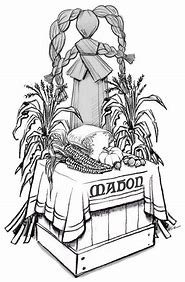
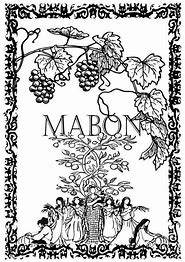
Let’s Have Some Fun – Printable Ostara Coloring Pages
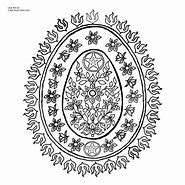
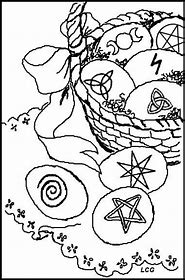
THE WICCAN CALENDAR: OSTARA (SPRING EQUINOX)
When is Ostara: March 19-23
Ostara pronunciation: OH-star-ah
Themes: balance, renewal, action, beginnings, hope, new possibilities
Also known as: Alban Eiler, Rites of Spring, Eostra’s Day, Vernal Equinox, March Equinox, Spring Equinox, Lady Day, Bacchanalia
Ostara is the second of three spring festivals on the Wheel of the Year. Coming in between Imbolc and Beltane, this is a time for celebrating the balance between extremes that is found amid the seasons. Although it may still be chilly in many regions, this is the official beginning of Spring in the Northern Hemisphere—it is the Vernal (Spring) Equinox, the moment of exact balance between the light and the dark.
Though it’s typically celebrated on March 20, the exact moment of the Equinox varies from year to year. This is due to a slight misalignment between the Gregorian calendar and the actual rate of the Earth’s rotation around the Sun. The Equinox also occurs at differing local times, so depending on where you live, it may fall the day before or the day after the date listed on any given calendar. For this reason, a date range of March 19-21 is often cited in sources on the Wheel of the Year.
In the Wiccan mythology, the growing daylight is evidence of the God moving from infancy toward maturity. Likewise, the Earth becomes warmer and more fertile as the Goddess is coming into the full power of her Maiden aspect. The promise of greener, warmer, more bountiful times is becoming apparent as buds and blossoms emerge from the trees and shrubs, bees return to begin the pollination cycle, and fields of grass wake up from their winter slumber. This is a time of innocence and child-like wonder as the end of Winter finally becomes a reality and being outdoors is pleasant again. We have not yet arrived at the passion and heat of Summer, but are instead enjoying the more balanced energies of this Equinox.
To honor the energies of this time of year, you can decorate your altar Click here to read the rest of this article about Ostara/Spring Equinox
Spell for Today – 5 Simple Ostara Rituals
(YOU CAN COPY AND PASTE ANY SPELLS POSTED TO A DOCUMENT TO PRINT AND/OR SAVE ON YOUR COMPUTER)
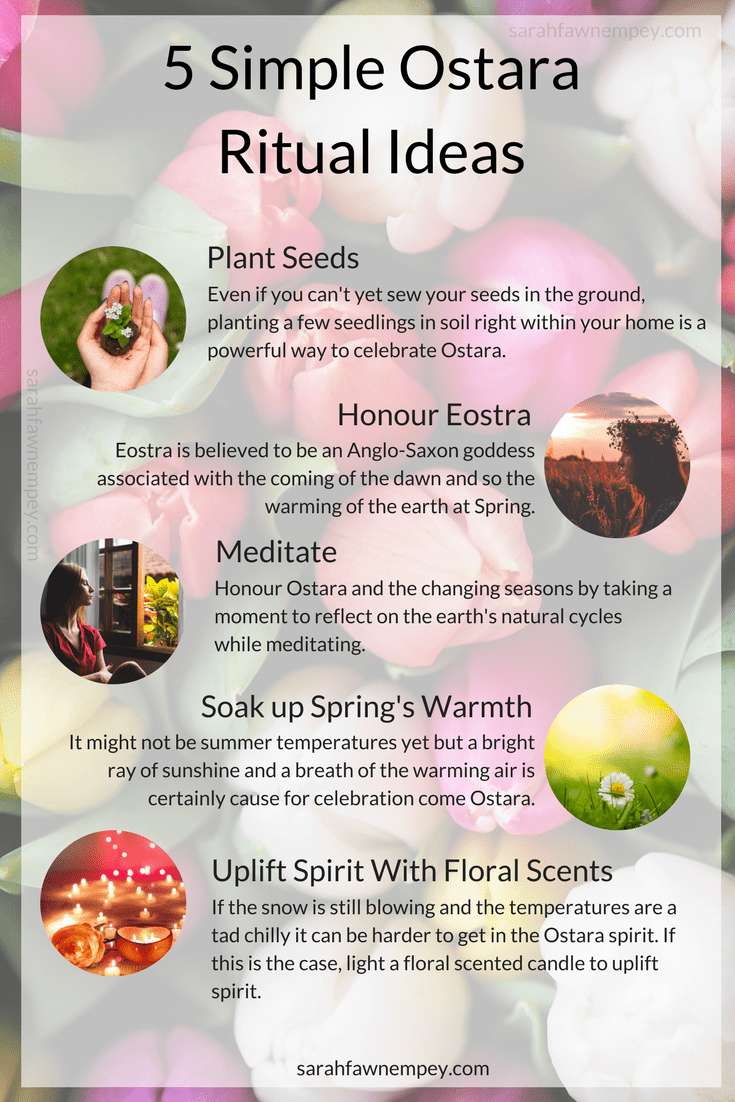
Spell For Today – Ways to Honor Mabon c. 2017
(YOU CAN COPY AND PASTE ANY SPELLS POSTED TO A DOCUMENT TO PRINT AND/OR SAVE ON YOUR COMPUTER)

Some of the Witchcraft/Magickal Correspondence and Symbols For Ostara c.2022
(YOU CAN COPY AND PASTE ANY COROSPONDENCES POSTED TO A DOCUMENT TO PRINT AND/OR SAVE ON YOUR COMPUTER)
Correspondences & Symbols of Ostara
Symbols used to represent Ostara include the egg-for fertility and reproduction, and the hare-for rebirth and resurrection, the New Moon, butterflies and cocoons. Symbolically, many Pagans choose to represent Ostara by the planting of seeds, potted plants, ringing bells, lighting new fires at sunrise, either in the fireplace, in the cauldron, or light a balefire outdoors. I always give myself a gift of a newly potted plant or take a seed and plant it within my cast Circle. Ritually, a fire may be lit in the cauldron during (not before) the rite itself. You may want to decorate your altar with a colorful bouquet of Spring wildflowers. Other traditional activities include working on magickal gardens and practicing all forms of herbal work—magickal, artistic, medicinal, culinary, and cosmetic. author unknown
Ostara Deities: Eostre, the adolescent Spring Maiden, the adolescent Spring Lord, All Youthful and Virile Gods and Goddesses, Sun Gods, Mother Goddesses, Love Goddesses, Moon Gods and Goddesses, and all Fertility Deities including :Persephone, Blodeuwedd, Eostre, Aphrodite, Athena, Gaia, Cybele, Hera, Isis, Ishtar, Minerva, Venus, Robin of the Woods, the Green Man, Cernunnos, Lord of the Greenwood, The Dagda, Attis, The Great Horned God, Mithras, Odin, Thoth, Osiris, and Pan.
Symbolism of Ostara: Renewed promise of life, The Union of the Goddess and the God, Fertility, and dispensing of the old and making way for the new.Resurrection of life , The Season of Rebirth
Symbols of Ostara: Eggs, bunnies, new moon, butterflies, cocoons, dragons, flowers,trees.
Colors: lemon yellow, pale green and pale pink. Other appropriate colors include green, all pastels, Robin’s egg blue, violet, and white.
Ostara Foods: eggs, egg salad, hard-boiled eggs, honey cakes, first fruits of the season, fish, cakes, biscuits, cheeses, honey and ham. You may also include foods made of seeds, such as sunflower, pumpkin and sesame seeds, as well as pine nuts. Sprouts are equally appropriate, as are leafy, green vegetables.
Plants and Herbs: acorn, broom, celandine, cinquefoil, crocuses, daffodil, dandelion, dogwood, elder, ginger, Gorse, honeysuckle (woodbine), iris, jasmine, jonquils, irish moss, lavender, lemon balm, lilac, Lily, lily of the valley, lovage, marjoram, meadowsweet, narcissus, oak, oakmoss, olive, orris root, peony, rose, rose hips, sage, snowdrops, strawberry, tansy, tarragon, thyme, trefoil (purple clover), tulip, vervain, violet, willow, woodruff and all spring flowers.
Incense: jasmine, frankincense, myrrh, dragon’s blood, cinnamon, nutmeg, aloes wood, benzoin, musk, African violet, sage, strawberry, lotus, violet flowers, orange peel, or rose petals.
Gemstone: agate, amazonite, amethyst, aquamarine, bloodstone, clear quartz crystal, garnet, lapis lazuli, moonstone, red jasper and rose quartz.
Spellwork for Ostara: Spellwork for improving communication and group interaction are recommended, as well as fertility, balance and abundance
Animals and Mythical Beasts: rabbits,snakes,unicorns, merpeople, and pegasus
Candle Colors: Yellow and Green.
Tree: The Alder, a tree sacred to the God Bran, who is said to protect the British Isles. Trees are very
important to Witches, and indeed important to us all. They are the lungs of the Earth, purifying the very air we breathe as they shade us and protect us.
Straight from
Some of the Witchcraft/Magickal Correspondence and Actives for Mabon c. 2018
(YOU CAN COPY AND PASTE ANY COROSPONDENCES POSTED TO A DOCUMENT TO PRINT AND/OR SAVE ON YOUR COMPUTER)
Mabon Activities and Correspondences
Symbolism of Mabon: The completion of the Harvest begun. Day and night are equal and the God prepares to leave His physical body and begin the great adventure into the unseen.
Symbols of Mabon: all harvest symbols, corn, autumn flowers, red poppies,nuts, grains, leaves, acorns, pine and cypress cones, oak sprigs, wreaths, vine, grapes, cornucopia, horns of plenty, burial cairns, apples, marigolds, harvested crops. wine, gourds
Colors : Orange, Dark Red, Yellow, Indigo, Maroon and Brown.
Goddesses: Modron(Welsh), Bona Dea, Harvest Deities, Persephone, Demeter/Ceres, Morgan(Welsh- Cornish), Snake Woman(Aboriginal), Epona (Celtic-Gaulish), Pamona(Roman), the Muses(Greek).
Gods: Mabon, Modron(Welsh), Sky Father, John Barleycorn , the Wicker-Man, the Corn Man, Thoth(Egyptian), Hermes, Hotei(Japanese), Thor, Dionysus(Roman), Bacchus(Greek) and all wine Deities.
Tarot Cards: Judgment and The World
Altar Decorations: acorns, pinecones, autumn leaves, pomegranate, statue of the Triple Goddess in her Mother phase.
Mabon Herbs: Rue, yarrow, rosemary, marigold, sage, walnut leaves and husks, mistletoe, saffron, chamomile, almond leaves, passionflower, frankincense, rose hips, bittersweet, sunflower, wheat, oak leaves, dried apple or apple seeds.
Foods of Mabon: cornbread, wheat products, bread, grains, berries, nuts, grapes, acorns, seeds, dried fruits, corn, beans, squash, roots (ie onions, carrots, potatoes, etc), hops, apples, pomegranates, carrots, onions, potatoes, roast goose or mutton, wine, ale and ciders, breads, apples, pomegranates
Animals: dogs, wolves, stag, blackbird, owl, eagle, birds of prey, salmon & goat, Gnomes, Sphinx, Minotaur, Cyclops, Andamans and Gulons.
Element: water.
Incense : pine, sweetgrass, apple blossom, benzoin, myrrh, frankincense, jasmine, sage wood aloes, black pepper, patchouly, cinnamon, clove, oak moss
Mabon Stones : During Mabon, stones ruled by the Sun will help bring the Sun’s energy to you.clear quartz, amber, peridot, diamond, gold, citrine, yellow topaz, cat’s-eye, adventurine.
Customs: offerings to land, preparing for cold weather by bringing in harvest, cutting willow wands( Druidic), leaving apples upon burial cairns & graves as a token of honor, walks in forests, gather seed pods & dried plants, fermenting grapes to make wine,picking ripe produce, stalk bundling
Spellworkings of Mabon: Protection, prosperity, security, and self- confidence. Also those of harmony and balance. Taboos:It was considered unlucky to cut down the very last of the Harvest, and so was also left to stand in the field by some traditions.
Activities of Mabon: Select the best of each vegetable, herb, fruit, nut, and other food you have harvested or purchased and give it back to Mother Earth with prayers of thanksgiving. Hang dried ears of corn around your home in appreciation of the harvest season. Do meditations and chanting as you store away food for the Winter. Do a thanksgiving circle, offering thanks as you face each direction – – for home, finances, and physical health (North); for gifts of knowledge (East); for accomplishments in career and hobbies (South); for relationships (West); and for spiritual insights and messages (Center). Decorate the table with colorful autumn leaves in a basket. Display the fruits of the harvest – corn, gourds, nuts, grapes, apples – preferably in a cornucopia. Or decorate with wildflowers, acorns, nuts, berries, cocoons, anything that represents the harvest to you. Like its sister equinox, halfway across the Wheel of the Year, the Autumn Equinox is a good occasion for a ritual feast. Plan a meal that uses seasonal and symbolic fruits and vegetables. You can serve bread, squash, corn, apples, cider and wine. Make some homemade wine or cordial gather and dry herbs, plants, seeds and seed pods. Make grapevine wreaths using dried bitter-sweet herb for protection. Use ribbons of gold and yellow to bring in the energy of the Sun, and decorate with sprigs of dried yarrow or cinnamon sticks. Make a protection charm of hazelnuts (filberts) strung on red thread. Make a witch’s broom. Tie dried corn husks or herbs (broom, cedar, fennel, lavender, peppermint, rosemary) around a strong, relatively straight branch of your choice. Make magic Apple Dolls Gifts of the Harvest can be used to make tools and emblems that will remind us of their bounty all year round. Look for colored leaves. Collect fallen leaves and make a centerpiece or bouquet for your home. Save the leaves to burn in your Yule fire. Vist an apple orchard and, if possible, pick your own apples. Hang apples on a tree near your home. Watch the birds and other small animals who will enjoy your gift. This is also the time for replacing your old broom with a new one. As the broom corn is ripe now, besom making is traditional and magickal this time of year. Begin the festival with a vineyard or orchard harvest. You might check the farm lands in your area to see if there’s an orchard or pumpkin patch that allows customers to harvest produce for themselves. Traditionally Sabbat festivals begin at sun set on the eve of the Holiday. You can use the daytime hours of this holiday eve to prepare baskets for harvesting the next day. Baking a pumpkin pie (from scratch if possible) is a wonderful way to bring in the fragrance of the holiday season
Happy and Blessed Ostara/ Spring Equinox

Happy and Blessed Mabon/Autumn Equinox
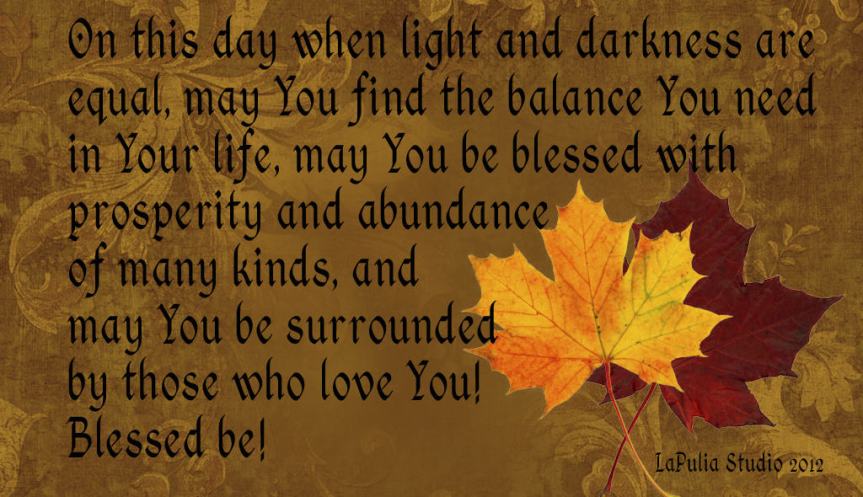
Who are the Harvest Gods and Goddesses? Archetypal meanings of Harvest deities.
Source: .triplemoonpsychotherapy.com
The practice of expressing gratitude for the harvest season and preparing for the onset of winter is a widespread and ancient tradition observed by cultures across the globe.
Festivals are held to celebrate the abundance of crops, offer thanks to Mother Earth, and bid farewell to Summer. Historically, mythologies worldwide have honored and revered various deities associated with the harvest and the Autumn Equinox. Although not a comprehensive account, this article briefly acknowledges some of the most prominent harvest and equinox deities from various cultures, listed alphabetically.
Autumnus, the Roman goddess of the Harvest
Autumnus, the fall season’s deity, embodies nature’s overflowing abundance during harvest. In addition, Autumnus is gender fluid, appearing in both male and female forms, which speaks to the inclusive and diverse nature of this season’s divine patron.
Banbha, the Celtic goddess and Earth Mother
Amidst the fall equinox celebrations, the Irish deity Banbha reigns supreme. As an Earth Mother, she presides over the culmination of the bountiful harvest. Banbha, much like the revered Greek goddess Gaia, is the protector and nurturer of all living beings and the land that sustains them.
Ceres, the Roman goddess of the Harvest, grain, and fertility
Ceres, the goddess of the harvest, was revered for her abundant generosity and for imparting essential knowledge to humanity.
In Greek mythology, she was known as Demeter. She was hailed as the deity who taught people the art of cultivating, preserving, and preparing grains and maize. Her divine powers were closely linked to the land’s fertility, and she was regarded as one of the most prominent guardians of the harvest.
Ceres’ influence and guidance ensured the earth’s bounty was always plentiful. Her legacy lives on as a symbol of abundance and fertility.
Çhicomecoatl, the Aztec goddess of abundance and corn
Çhicomecoatl, the goddess of fire and fertility, embodies vitality, community, and plenty. She is revered in Mexico, particularly during the harvest season, as the guardian of corn and all fertile things. Her emblems are hot spices, maize, and fire, representing her power and providence over the land.
Corn Mother, the goddess of the Harvest of the Indigenous Peoples of North America
With her bountiful presence, the Corn Mother embodies the qualities of abundance, vitality, and strength. Her powers of fertility and harvest are celebrated as she blesses the land with the promise of plentiful crops.
In addition to her agricultural emblems of corn and corn sheaves, she also holds the healing attributes of the earth, nurturing all who seek her aid.
Demeter, the Greek goddess of the Harvest and Agriculture
At the center of one of the most famous myths about the seasons and the Harvest lies Demeter, the goddess of grain and fertility and mother of Persephone.
When Hades, the god of the Underworld, abducted Persephone, Demeter’s anguish for her daughter resulted in a severe drought that threatened all life on Earth. With the crops perishing and humankind facing doom, Demeter embarked on a quest to rescue her daughter.
However, despite eventually reuniting with Persephone, now the goddess of the Underworld, fate demanded a sacrifice. Having consumed six pomegranate seeds, Persephone was bound to spend six months of the year in the Underworld, which begins with the Autumn Equinox when Persephone descends again into the depths.
Huichi, the Japanese goddess of the Harvest Click here to read the rest of this article
Ostara – Saxon Goddess Of Spring And Easter
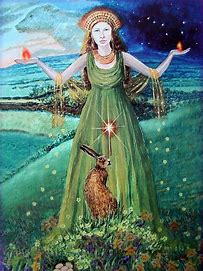
Ostara
From goddessgift.com
Easter gets its name from the goddess Ostara, also known as Eastre. Ostara is a fertility goddess. Her annual arrival in spring is heralded by the flowering of trees and plants and the arrival of babies, both animal and human.
Ostara’s Meaning, Traditions and A Simple Ostara Ritual
From otherworldlyoracle.com
The Spring Equinox is knocking on our dew-stained windows, beckoning us to remember its beauty and release. Many Wiccans, witches and Pagans celebrate the Spring Equinox, also known as Ostara, which falls around March 21st on the calendar each year. Learn all about Ostara’s meaning, how to celebrate Ostara with old and modern traditions, and adapt our simple Ostara ritual as your own.
Ostara and Easter’s Similar Origins
The word Ostara originates from a Spring Goddess’s name—Eostre. The symbols of Ostara are uncannily similar to the traditions of the Christian holiday Easter. Why is this? To find Jesus’ Resurrection Day on the calendar – look at the first full moon following the Spring Equinox, and Easter will be on the first Sunday following the full moon. If it happens the first full moon of Spring falls on a Sunday, then Easter will be on the following Sunday.
Easter & Fertility
The word Easter looks a lot like the Spring Goddess’s name Eostre, doesn’t it? There’s no coincidence there! Ostara (the Spring Equinox) was celebrated by Germanic people and by the Anglo-Saxons. Fertility and rebirth of the earth were the two main reasons for Ostara festivities. The earth is returning to its abundant greenness and the sun is returning to the high skies. Flowers are budding, lambs are bleating in the fields, and the whole of nature is singing.
Ostara Symbols and Traditions
The Easter Bunny is an image on a pedestal with the likes of Santa Claus and The Tooth Fairy. But where does the Easter Bunny come from? Just like so many other historical Holiday icons and traditions, the Easter Bunny was born from Pagan customs. Bunnies are cute, fluffy, and hippety-hoppety. But they’re also known for mating. LOTS of it. It should come as no surprise the Rabbit is one of Ostara’s original symbols of fertility. In addition, there’s speculation the goddess Eostre once had a consort who was part-rabbit.
Easter Eggs
Easter Eggs are another symbol of fertility and rebirth. Christians claim Easter eggs represent Christ’s Resurrection – an egg inevitably means new life or birth into a new life. The “dying of eggs” tradition may have its roots in the ancient Zoroastrians’ painting egg ritual on the Spring Equinox. Painting eggs is a common activity at various times of the year for many countries, including Ukraine, the U.S., Austria, Germany, Poland, Russia, and Bulgaria.
Flowers
Another image that is widely associated with Ostara and Easter…the flower. The symbol of the flower is new life. Flowers have an uplifting effect on us. Their bright colors prove even though there is a time for death, there will always be a time for rebirth. This Ostara, pick some wildflowers and place them in a vase on your table or altar. Or decorate your table with Spring greenery. It will remind you of the beauty of Spring and of the true meaning of Ostara (and Easter, for that matter) which is new life.
13 SIMPLE Ways to Celebrate Ostara …
A Simple Ostara Ritual
If you’re looking for simple Ostara rituals, here’s one of ours to adapt to fit your needs.
On Ostara, stand outside somewhere private. Breathe in the air and remind yourself why Spring is special and magical. Let old memories of the Springtime and Ostara arise in your mind. Holding the joyful memories of spring in your mind:
Turn and face the direction of the sun. Thank the sun for its grand return to the sky and ask for its blessings upon the land.
Thank Mother Nature for her nourishment and love.
If you have shoes on, remove them and allow the earth’s energy to rise into your feet and gradually up your legs and then through the rest of your body.
Choose the nearest tree and walk over to it, still feeling the earth’s energy undulating in waves throughout your body. Hold your hand out to the tree, fingers up and place your palm against the tree, as if saying hello.
Let the tree’s energy flow into your fingers and palm and then into your arm, slowly meeting and mixing with the energy still rising from your feet. Place your other palm against the tree to greet the tree’s spirit.
Let the tree’s energy fill the top portion of your body, including your mind and heart. At this point, you will feel the earth and tree’s energy meeting and combining. If you cannot feel it physically, feel it with your mind and spirit.
Visualize the energies mixing and filling your body fluidly. This is the spirit of Spring and the soul of nature.
Wrapping Up the Ritual…
To end your Ostara ritual, be sure that both of your feet are flat upon the ground and both palms are flat against the same tree. Imagine some of your energy and spirit flowing out from your heart chakra and into the tree.
Think of your solar plexus as sending waves of your energy down through your legs, through your feet and into the earth. This is to give some of yourself to the earth, as you have taken some of its energy in this rite.
Once more, face the sun (don’t stare directly at it), and thank the sun for its warmth and thank the earth for its upcoming gifts to us this Spring.
After you have performed this simple Ostara ritual, remember the exchange of energies for the rest of the day. Remember why we love Spring and be grateful for all of the fruitfulness of the earth. If we take, we must give something in return.
Ostara Recipes: 15 Spring Equinox Foods and Meals from otherworldlyoracle.com
Egg Cleanse: How To Do An Egg Cleansing & Read the Meaning from otherworldyoracle.com
Ostara: The Promise
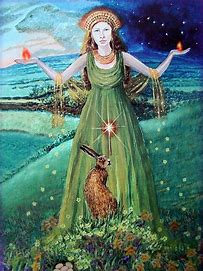
Ostara, the vernal equinox, is celebration of rebirth and renewal. It’s the promise of eternal life. The green world holds the promise of rebirth. The grass greens sand a veil of green mists the trees. Daffodil foliage pierces the soil, greeting the spring Sun. In the early evening the small Hylas or “peppers” can be heard singing the spring song from the swamp margins. It’s a song as ancient as time itself. It’s the voice of renewal and enduring life.
To observe Ostara’s promise of life’s eternal cycle, you’ll need two hard-boiled eggs. Place them on your altar. Hold one egg. Think of how it holds the promise of new life. Peel the egg and discard the shell. Slowly, with purpose, eat the egg. The white represents the future. The yolk represents the life-giving Sun. Last, decorate the second egg with life affirming design of your choice. Flowers, a cross, and a pentacle are a few ideas. Keep the egg for a while, then discard it.
Let Ostara’s promise of new life spark your energy and creativity.
By James Kambos in Llewellyn’s Witches’ Datebook 2024 Page 57
Mabon: The Bounty
The sabbat of Mabon observes the autumn equinox. It’s a time of Thanksgiving for the bounty of the earth and a time to observe nature’s decline into the dark season.
Mabon means “Great Son.” As the legend goes, Mabon the son of the Goddess, was abducted as a child and taken to the land of Avalon. He was freed and returned as a young man. The legend is used to explain nature’s decline in autumn and its return at Ostara. Even though we are entering the dark season, we are surrounded by bounty. Country markets overflow with pumpkins, apples, and autumn flowers.
To celebrate this time of bounty, decorate your altar with seasonal decor–pumpkins, mums, and leaves are ideas. Then in your Book of Shadows write down the bounty you are grateful for–family, home, career, etc. Leave your book open for a few days. Then review your list. Send loving thoughts to the people and things on your list. Put your book away.
The chill comes and the fingers of the dark earlier across the land, but we are surrounded by the bounty of Mabon.
By James Kambos in Llewellyn’s Witches’ Datebook 2024 Page 119
Mabon (Autumn Equinox) Folklore and Traditions
Source: learnreligions.com
Interested in learning about some of the traditions behind the celebrations of the autumn equinox? Find out why Mabon is important, learn about the legend of Persephone and Demeter, the symbolism of stags, acorns and oaks, and explore the magic of apples and more!
Wondering where the word “Mabon” came from? Was it a Celtic god? A Welsh hero? Is it found in ancient writings? Let’s look at some of the history behind the word.
Mabon falls around September 21 in the northern hemisphere, and around March 21 below the equator. This is the autumn equinox, it’s a time to celebrate the season of the second harvest. It’s a time of balance, of equal hours of light and dark, and a reminder that the cold weather isn’t far away at all. If you’ve got kids at home, try celebrating Mabon with some of these family-friendly and kid-appropriate ideas.
Autumn Equinox Around the World
At Mabon, the time of the autumn equinox, there are equal hours of light and dark. It is a time of balance, and while summer is ending, the winter is approaching. This is a season in which farmers are harvesting their fall crops, gardens are beginning to die, and the earth gets a bit cooler each day. Let’s look at some of the ways that this second harvest holiday has been honored around the world for centuries. Read more about the Autumn Equinox Around the World.
Gods of the Vine
Grapes are everywhere in the fall, so it’s no surprise that the Mabon season is a popular time to celebrate wine-making, and deities connected to the growth of the vine. Whether you see him as Bacchus, Dionysus, the Green Man, or some other vegetative god, the god of the vine is a key archetype in harvest celebrations. Learn more about the Gods of the Vine.
Pagans and Renaissance Festivals
Renaissance Faires and Festivals aren’t specifically Pagan, but there are a few reasons why you’ll see a lot of us there. Let’s look at how this counterculture institution of the sixties and seventies turned into a place where you can almost always find other Pagans.
The Celebration of Michaelmas
In the British Isles, Michaelmas is celebrated on September 29. As the Feast of St. Michael within the Catholic church, this date is often associated with the harvest because of its proximity to the autumn equinox. Although it’s not a Pagan holiday in the true sense, Michaelmas celebrations often included older aspects of Pagan harvest customs, such as the weaving of corn dolls from the last sheaves of grain. Read more about the Michaelmas Celebration.
Nutting Day
Around the middle of September, the nut season starts. Hazelnuts ripen in the hedges, and they have long been connected to folklore and legends. Hazel is associated to the Celtic tree month of Coll, from August 5 to September 1, and the very word Coll means “the life force inside you.” Hazelnuts are connected to wisdom and protection, and are often found near sacred wells and magical springs.
The acorn is a symbol of strength and power. In the fall, these tiny yet hardy little nuggets drop from the oak trees to land on the ground. Because the acorn only appears on a fully mature oak, it is often considered a symbol of the patience needed to attain goals over long periods of time. It represents perseverance and hard work. In many cultures the oak is sacred. Read more about Acorn & Oak Folklore.
Pomona, the Apple Goddess
Pomona was a Roman goddess who was the keeper of orchards and fruit trees. Unlike many other agricultural deities, Pomona is not associated with the harvest itself, but with the flourishing of fruit trees. She is usually portrayed bearing a cornucopia or a tray of blossoming fruit. Learn more about Pomona, the Goddess of Apples.
Although they haven’t always looked the way they do now, scarecrows have been around a long time and have been used in a number of different cultures. From the farms of ancient Greece to the rice fields of Japan, scarecrows are often used for a variety of purposes. Learn more about Scarecrow Magic & Legends.
Can You Balance an Egg on the Equinox?
:max_bytes(150000):strip_icc():format(webp)/EggBalance_1500-56a6df363df78cf77290a3ea.jpg)
There’s a very popular story that circulates on the Internet twice every year at the spring and fall equinoxes, and it’s about eggs. According to legend, if you try to stand an egg on its end on the vernal or autumnal equinox, you’ll be successful, because of the polarity and balance of the earth. Let’s explore the legend of Egg Balancing on the Equinox.
Source:
Wigington, Patti. “Mabon (Autumn Equinox) Folklore and Traditions.” Learn Religions, Sep. 5, 2021, learnreligions.com/mabon-folklore-traditions-4590167.
A Thought for The Summer Solstice
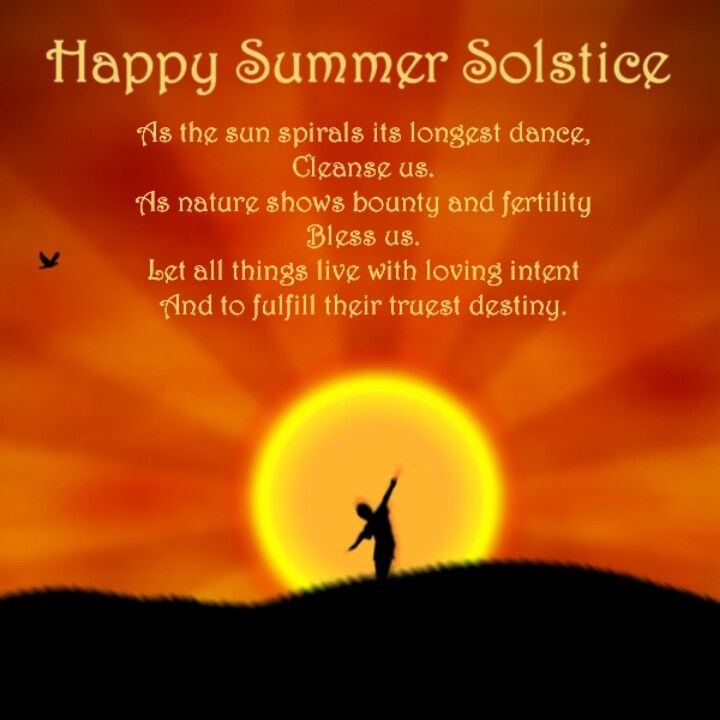
May you find the light that always shines within you!
How the Pope Stole Christmas
How the Pope Stole Christmas
Once in ol’ England, both ancient and vast,Lived folks with traditions, long held and steadfast.
They danced and they sang when winter was nigh,
Under the stars, beneath the cold sky. The solstice was coming, the shortest of days, They prepared for the feast in so many ways.
With holly and ivy, they decked every hall, and a Yule log was burned, a tree once so tall. But just West of Rome, sat a man robed in white,
Pope Greg, in his Vatican… was his hat too tight?
For he pondered and prayed with his furrowed brow, “How can we bring these pagans to vow? VOW! VOW! VOW! VOW! “To our faith, to our fold, in the Christ Child believe, and their old pagan ways they must surely leave.”
So he plotted and planned, found a few saints to send, “We must change their tradition, Saturnalia must end! Shouting, “Let us take over this pagan delight, and make it about the Holy Birth Night.
We’ll infuse their rituals with our good Christian grace,
And Christ’s Mass will slowly take the solstice’s place. “So it happened o’er time, to the pagans’ surprise, Their meals and their dances became Christianized.
Their feasting was now for the Christ Child’s birth, and their parties lost some of their ol’ heathen mirth. Where Odin once rode ‘cross the sky on Sleipnir, soon Saint Nicholas would soar, with eight tiny reindeer.
All the mistletoe, holly, ham, trees, and wassails,
Would all stick around, though the Pope’s plan prevails. For the people adapted, they bent and they swayed,
But the essence of joy in their hearts, it still stayed.
They embraced the new faith, yet remembered the old,
In the stories they recounted, both spirited and bold. Pope Greg had succeeded, but maybe not as he planned,
For the spirit of solstice in their hearts still fanned.
The magic of yule, it forever remained,
Hiding inside the message that Christmas contained. And so, my dear reader, has our tale closed?
Is babe Jesus the victor, to reign unopposed?
Or could his day be stolen out from under his manger?
As Jeff Bezos circles… is “Christmas” still in danger? Perhaps the real lesson is that the season’s so large,
That there is no need to leave just one group in charge.
For the joy and the love, in each heart does reside,
No matter the reason, or the faith that’s applied. We hold one goal in common, or at least we should,
And that dream is just: to do that which is good.
So we’ll wrap up our poem, though last but not least:
Who sitting here will carve the roast beast?
P.S. – If you’d like to share the poem on Facebook, we also posted it there:
https://www.facebook.com/v18.0/plugins/post.php?app_id=&channel=https%3A%2F%2Fstaticxx.facebook.com%2Fx%2Fconnect%2Fxd_arbiter%2F%3Fversion%3D46%23cb%3Df3742b2c9423e6c%26domain%3Dwww.themonastery.org%26is_canvas%3Dfalse%26origin%3Dhttps%253A%252F%252Fwww.themonastery.org%252Ffe151f2ac1d7e8%26relation%3Dparent.parent&container_width=260&href=https%3A%2F%2Fwww.facebook.com%2FUniversalLifeChurch%2Fposts%2Fpfbid0WRnjzJ3d5Tf5LhmpWjSUhYadBisvJrwM4m6Umo7LFP4EcP8R8bkyRHUNv1PogrLnl&locale=en_US&sdk=joey
Midwinter Night’s Eve: Yule c. 2013
Midwinter Night’s Eve: Yule
By Mike Nichols
Our Christian friends are often quite surprised at how enthusiastically we
Pagans celebrate the ‘Christmas’ season. Even though we prefer to use the word
‘Yule’, and our celebrations may peak a few days BEFORE the 25th, we nonetheless follow many of the traditional customs of the season: decorated trees, carolling, presents, Yule logs, and mistletoe. We might even go so far as
putting up a ‘Nativity set’, though for us the three central characters are
likely to be interpreted as Mother Nature, Father Time, and the Baby Sun-God.
None of this will come as a surprise to anyone who knows the true history of the
holiday, of course.
In fact, if truth be known, the holiday of Christmas has always been more
Pagan than Christian, with it’s associations of Nordic divination, Celtic
fertility rites, and Roman Mithraism. That is why both Martin Luther and John
Calvin abhorred it, why the Puritans refused to acknowledge it, much less
celebrate it (to them, no day of the year could be more holy than the Sabbath),
and why it was even made ILLEGAL in Boston! The holiday was already too closely associated with the birth of older Pagan gods and heroes. And many of them (like Oedipus, Theseus, Hercules, Perseus, Jason, Dionysus, Apollo, Mithra, Horus and even Arthur) possessed a narrative of birth, death, and resurrection that was uncomfortably close to that of Jesus. And to make matters worse, many of them pre-dated the Christian Savior.
Ultimately, of course, the holiday is rooted deeply in the cycle of the
year. It is the Winter Solstice that is being celebrated, seed-time of the
year, the longest night and shortest day. It is the birthday of the new Sun
King, the Son of God — by whatever name you choose to call him. On this
darkest of nights, the Goddess becomes the Great Mother and once again gives
birth. And it makes perfect poetic sense that on the longest night of the
winter, ‘the dark night of our souls’, there springs the new spark of hope, the
Sacred Fire, the Light of the World, the Coel Coeth.
That is why Pagans have as much right to claim this holiday as Christians.
Perhaps even more so, as the Christians were rather late in laying claim to it,
and tried more than once to reject it. There had been a tradition in the West
that Mary bore the child Jesus on the twenty-fifth day, but no one could seem to
decide on the month. Finally, in 320 C.E., the Catholic Fathers in Rome decided
to make it December, in an effort to co-opt the Mithraic celebration of the
Romans and the Yule celebrations of the Celts and Saxons.
There was never much pretense that the date they finally chose was
historically accurate. Shepherds just don’t ‘tend their flocks by night’ in the
high pastures in the dead of winter! But if one wishes to use the New Testament
as historical evidence, this reference may point to sometime in the spring as
the time of Jesus’s birth. This is because the lambing season occurs in the
spring and that is the only time when shepherds are likely to ‘watch their
flocks by night’ – to make sure the lambing goes well. Knowing this, the
Eastern half of the Church continued to reject December 25, preferring a
‘movable date’ fixed by their astrologers according to the moon.
Thus, despite its shaky start (for over three centuries, no one knew when
Jesus was supposed to have been born!), December 25 finally began to catch on.
By 529, it was a civic holiday, and all work or public business (except that of
cooks, bakers, or any that contributed to the delight of the holiday) was
prohibited by the Emperor Justinian. In 563, the Council of Braga forbade
fasting on Christmas Day, and four years later the Council of Tours proclaimed
the twelve days from December 25 to Epiphany as a sacred, festive season. This
last point is perhaps the hardest to impress upon the modern reader, who is
lucky to get a single day off work. Christmas, in the Middle Ages, was not a
SINGLE day, but rather a period of TWELVE days, from December 25 to January 6. The Twelve Days of Christmas, in fact. It is certainly lamentable that the modern world has abandoned this approach, along with the popular Twelfth Night celebrations.
Of course, the Christian version of the holiday spread to many countries no
faster than Christianity itself, which means that ‘Christmas’ wasn’t celebrated
in Ireland until the late fifth century; in England, Switzerland, and Austria
until the seventh; in Germany until the eighth; and in the Slavic lands until
the ninth and tenth. Not that these countries lacked their own mid-winter
celebrations of Yuletide. Long before the world had heard of Jesus, Pagans had
been observing the season by bringing in the Yule log, wishing on it, and
lighting it from the remains of last year’s log. Riddles were posed and
answered, magic and rituals were practiced, wild boars were sacrificed and
consumed along with large quantities of liquor, corn dollies were carried from
house to house while carolling, fertility rites were practiced (girls standing
under a sprig of mistletoe were subject to a bit more than a kiss), and
divinations were cast for the coming Spring. Many of these Pagan customs, in an
appropriately watered-down form, have entered the mainstream of Christian
celebration, though most celebrants do not realize (or do not mention it, if
they do) their origins.
For modern Witches, Yule (from the Anglo-Saxon ‘Yula’, meaning ‘wheel’ of
the year) is usually celebrated on the actual Winter Solstice, which may vary by
a few days, though it usually occurs on or around December 21st. It is a Lesser
Sabbat or Lower Holiday in the modern Pagan calendar, one of the four quarter-
days of the year, but a very important one. This year (1988) it occurs on
December 21st at 9:28 am CST. Pagan customs are still enthusiastically
followed. Once, the Yule log had been the center of the celebration. It was
lighted on the eve of the solstice (it should light on the first try) and must
be kept burning for twelve hours, for good luck. It should be made of ash.
Later, the Yule log was replaced by the Yule tree but, instead of burning it,
burning candles were placed on it. In Christianity, Protestants might claim
that Martin Luther invented the custom, and Catholics might grant St. Boniface
the honor, but the custom can demonstrably be traced back through the Roman
Saturnalia all the way to ancient Egypt. Needless to say, such a tree should be
cut down rather than purchased, and should be disposed of by burning, the proper way to dispatch any sacred object.
Along with the evergreen, the holly and the ivy and the mistletoe were
important plants of the season, all symbolizing fertility and everlasting life.
Mistletoe was especially venerated by the Celtic Druids, who cut it with a
golden sickle on the sixth night of the moon, and believed it to be an
aphrodisiac. (Magically – not medicinally! It’s highly toxic!) But aphrodisiacs must have been the smallest part of the Yuletide menu in ancient times, as contemporary reports indicate that the tables fairly creaked under the strain of every type of good food. And drink! The most popular of which was the ‘wassail cup’ deriving its name from the Anglo-Saxon term ‘waes hael’ (be whole or hale).
Medieval Christmas folklore seems endless: that animals will all kneel down
as the Holy Night arrives, that bees hum the ‘100th psalm’ on Christmas Eve,
that a windy Christmas will bring good luck, that a person born on Christmas Day can see the Little People, that a cricket on the hearth brings good luck, that
if one opens all the doors of the house at midnight all the evil spirits will depart, that you will have one lucky month for each Christmas pudding you sample, that the tree must be taken down by Twelfth Night or bad luck is sure to follow, that ‘if Christmas on a Sunday be, a windy winter we shall see’, that ‘hours of sun on Christmas Day, so many frosts in the month of May’, that one
can use the Twelve Days of Christmas to predict the weather for each of the
twelve months of the coming year, and so on.
Remembering that most Christmas customs are ultimately based upon older
Pagan customs, it only remains for modern Pagans to reclaim their lost traditions. In doing so, we can share many common customs with our Christian
friends, albeit with a slightly different interpretation. And thus we all share
in the beauty of this most magical of seasons, when the Mother Goddess once
again gives birth to the baby Sun-God and sets the wheel in motion again. To
conclude with a long-overdue paraphrase, ‘Goddess bless us, every one!’

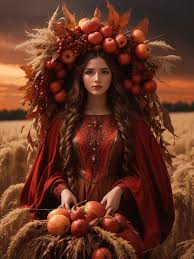
You must be logged in to post a comment.